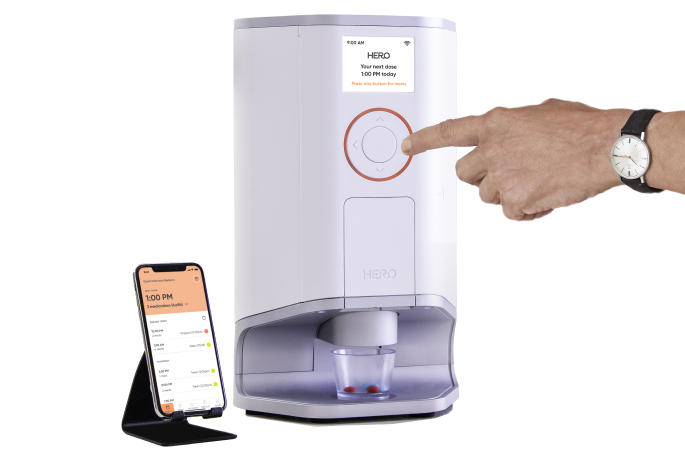In fact, 30% of the elderly population takes eight or more prescription medications per day with an average of 18 prescription medications taken per year.
No matter what age you are, you may find yourself in a situation where you need to take multiple medications. The more medications one takes, the more complex a regime becomes and with that comes a greater risk of errors.
We start to ask ourselves questions…
Did I already take my painkiller today?
Did Mom really take her blood pressure med this morning or get confused with yesterday’s dose?
Did I check if this new drug interacts with my existing regime?
Though we may keep the ubiquitous pad and paper on the kitchen counter, the data is showing that a more structured approach may be necessary.
125,000 Deaths Each Year Could Be Prevented
Unfortunately, the failure to take prescribed medications as indicated leads to an estimated 125,000 preventable deaths each year.
We get it. It’s hard to keep track of multiple medications with different doses at different times of the day. But there are steps you can take to make your multiple medication journey a smoother one. Here are five tips on how to take multiple medications:
1. Educate Yourself
It’s a simple equation: the more medications you take, the higher the risk of drug interactions.
That’s why it makes sense to educate yourself as best you can so you are empowered through the process.
Ask your doctor:
- What exactly is this drug for?
- How long will I need to take it?
- How (if at all) does it interact with my other meds?
- What time of the day should I take it?
Don’t stop there...read the inserts on your medications and learn about potential side effects so you are prepared and know which drug you can attribute any odd symptoms to.
2. Take a list of all your medications to all your doctors appointments
You know the old saying...the left hand doesn’t know what the right hand is doing.
Well, that applies to healthcare more often than most doctors would like to admit. The way our healthcare system works, we are often under the care of a variety of doctors, each a specialist in his or her own field.
While this fragmented care is inevitable when a patient suffers from diverse chronic conditions, it can lead to a lack of cohesiveness when it comes to an overall medication perspective.
We can’t stress just how important it is that you keep your doctors up to speed with all the medications you take, how long you’ve been taking them, and the prescribed doses. That way, they know if a medication they are looking at prescribing you is likely to interact with anything else.
Make sure you keep a list of any dietary and herbal supplements you may take, as these can be known to interact with common drugs.
3. Use a medication manager
When it comes to multiple medication use, you need to have some kind of system in place to organize and keep track of your pills as well as remind you when you need to take them.
Some people opt for traditional pill boxes, which have different compartments for each day of the week, and even compartments for different times of the day. If you use this kind of system, make sure to put reminders on your phone that will alert you when it’s time to take a medication.
Other patients like to use an online app for medication management that reminds them when to take a medication and tracks their history.
If you want true peace of mind, consider a personal medication manager like Hero, a device that will sort, dispense and manage all of your medications.





